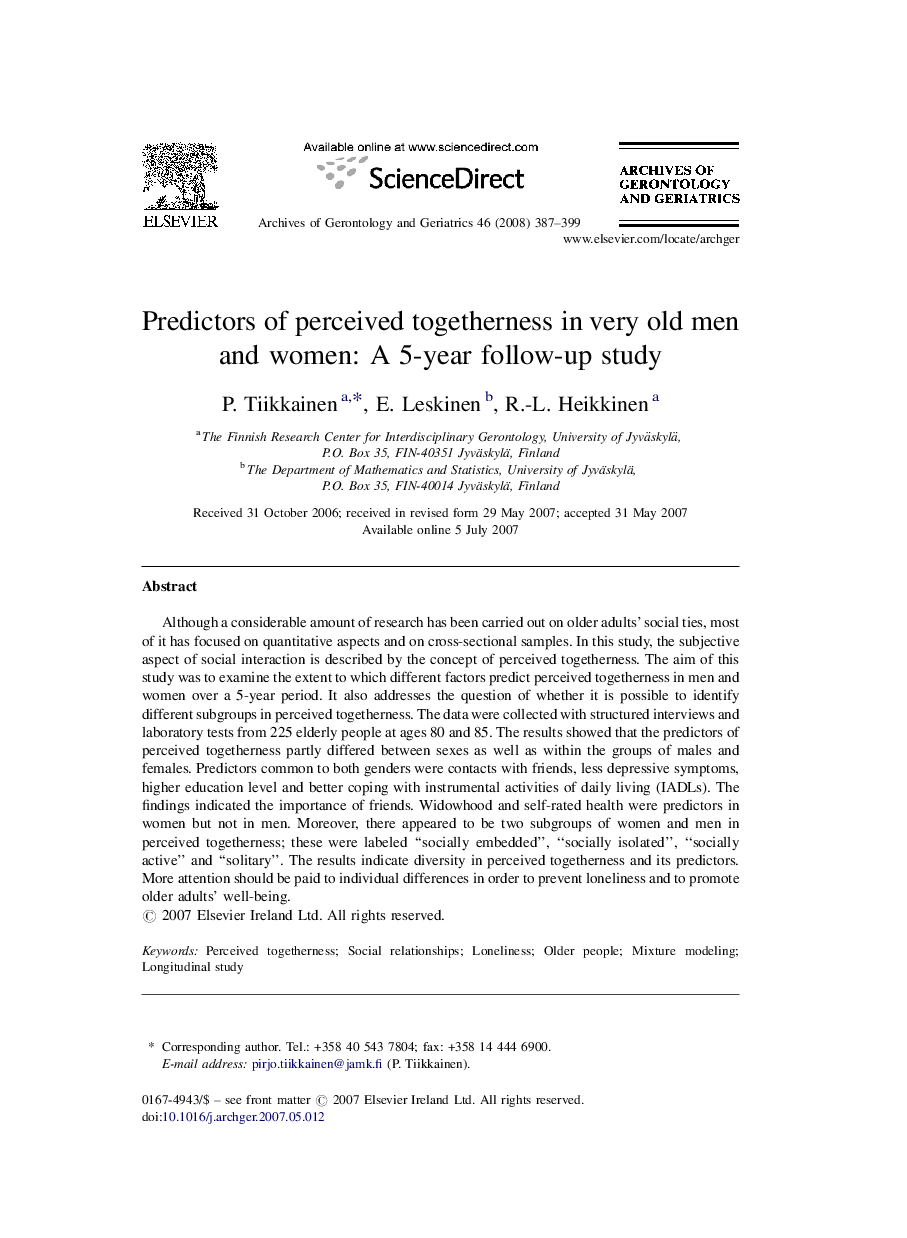| کد مقاله | کد نشریه | سال انتشار | مقاله انگلیسی | نسخه تمام متن |
|---|---|---|---|---|
| 1904254 | 1534476 | 2008 | 13 صفحه PDF | دانلود رایگان |

Although a considerable amount of research has been carried out on older adults’ social ties, most of it has focused on quantitative aspects and on cross-sectional samples. In this study, the subjective aspect of social interaction is described by the concept of perceived togetherness. The aim of this study was to examine the extent to which different factors predict perceived togetherness in men and women over a 5-year period. It also addresses the question of whether it is possible to identify different subgroups in perceived togetherness. The data were collected with structured interviews and laboratory tests from 225 elderly people at ages 80 and 85. The results showed that the predictors of perceived togetherness partly differed between sexes as well as within the groups of males and females. Predictors common to both genders were contacts with friends, less depressive symptoms, higher education level and better coping with instrumental activities of daily living (IADLs). The findings indicated the importance of friends. Widowhood and self-rated health were predictors in women but not in men. Moreover, there appeared to be two subgroups of women and men in perceived togetherness; these were labeled “socially embedded”, “socially isolated”, “socially active” and “solitary”. The results indicate diversity in perceived togetherness and its predictors. More attention should be paid to individual differences in order to prevent loneliness and to promote older adults’ well-being.
Journal: Archives of Gerontology and Geriatrics - Volume 46, Issue 3, May–June 2008, Pages 387–399